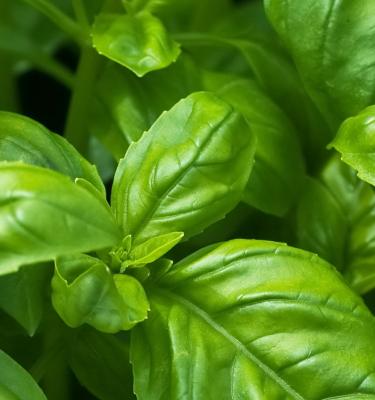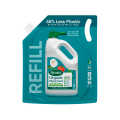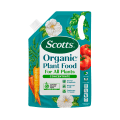

How to grow basil
No herb garden should be without a basil plant. Cultivated for centuries, it’s one of the easiest herbs to grow from seed and it makes a delicious addition to so many dishes. Grow sweet basil (Ocimum basilicum) for tasty Italian cooking and Thai and lemon basil (Ocimum tenuiflorum and Ocimum x citriodorum) for exciting Asian dishes.
Types of basil to grow
While there are many named varieties of basil available in other countries, in Australia, we tend to label basils by more basic characteristics such as country of origin or flavour. Here are a few of the more popular:
- Sweet basil – the most common and traditional type, ideal for Italian dishes
- Holy or sacred basil – most often used in Thai and South-East Asian cuisine
- Purple basil – there are a few named varieties with deep purple leaves and spicy clove-like flavour
- Greek basil (Ocimum obovatum) – small leaf basil with a sweet flavour
- Perennial basil (Ocimum gratissimum) – a loner-lived, perennial species with small leaves, tall spikes of purple flowers and clove fragrance
Essential equipment to grow basil
You will need the following equipment to grow basil at home:
- Basil seeds
- Pots
- Premium quality vegetable and herb potting mix
Where to grow basil
When growing basil, choose a sunny, sheltered spot with well-drained soil. Planting basil in raised beds improves drainage and gives some protection against slugs and snails. You’ll also find that basil is ideal for pots, even growing happily indoors on a sunny windowsill.
How to sow basil
You can sow basil indoors from August to September and outdoors from late September through to December and again from February to late March.
- Fill pots with potting mix and firm down.
- Sprinkle seed thinly over the top of the compost as instructed on the seed packet. Basil seeds germinate easily, so don’t sow more than you need.
- Cover the seeds with a light layer of potting mix.
- To avoid disturbing the seeds, stand the pots in a tray filled with water so the mix soaks up water.
- Place the pots somewhere warm with good indirect light until the seeds germinate.
- Water regularly but lightly.
- Once the seeds have germinated, let the seedlings grow on until they have developed at least two true leaves (these are the second pair of leaves to appear).
- Hold each seedling by a leaf (never hold the stems, as these are easily damaged) and carefully ease it out of the mix, using a pencil or something similar to help. Repot each seedling into its own individual pot using the same vegetable and herb mix.
- Wait until all danger of frost is past before moving basil plants outside to harden off.
- Basil may be grown in pots close to the kitchen or planted out into the vegetable garden to grow on. Pick as required.
How to care for basil
Basil dislikes cold, wet soil. In early spring, water in the morning so that the soil can dry out during the day. Avoid splashing the leaves, to reduce the risk of powdery mildew, a fungal disease.
If you are growing basil primarily for use in the kitchen, pinch off any flowers that appear because the leaves will develop a bitter taste once the plant has flowered.
Aphids can be a problem. Wipe them off by hand before infestations get too big. Natural predators like ladybirds will assist in reducing populations.
Harvesting basil
Harvest basil from mid spring. Regular harvesting will encourage plants to produce more leaves.
If you just need a few leaves, pick individual leaves that join the stem just below a new pair of leaves. This means that for every leaf you pick, the plant produces two more. When harvesting basil in quantities, always leave two or three sideshoots below the point where you cut, to encourage the plant to bush out.
For a supply of basil leaves through winter, move potted plants to a sunny, protected spot on a patio or veranda where they will be sheltered from cold winds and overnight frosts.
Storing basil leaves
In colder areas, you can freeze or dry leaves to give you a supply of basil through winter.
- To freeze basil leaves, remove all leaf stalks and wash the leaves. Blanch them in boiling water for a couple of seconds, then drain and rinse in iced water. Pat the leaves dry and place in an airtight container in the freezer.
- To dry basil leaves in an oven, turn it on to its lowest temperature setting then place the leaves on a baking tray and leave them in the oven for two to four hours until they crumble when bent.
- To air dry basil, cut leafy shoots with long stems, tie them in bunches and hang the bunches somewhere cool and well ventilated, in bright but indirect light. Air drying basil takes about a month.
Common pest or disease problems of basil plants
| Black spots on basil leaves |
Black spots on basil leaves can be caused by bacteria from the soil being splashed on to the leaves of the plant.
|
|
|---|---|---|
| Powdery mildew |
Powdery mildew is fungal disease that appears as a white powdery deposit or white spots on basil leaves, stunting growth and causing leaves to shrivel. Drought-stressed plants are more susceptible to this disease.
|
|
| Fusarium wilt |
Fusarium wilt is a soil-borne fungal disease that causes leaves to turn yellow and wilt. Affected plants are unable to take up water and die.
|
|
| Slugs and snails |
Slugs and snails love basil and will strip plants bare. They can be identified by the slime trails that they leave, as well as the damage they do.
|
|
| Whitefly |
Whitefly sucks plant sap and excretes a sticky substance called ‘honeydew’ which covers leaves and encourages the growth of sooty mould, stunting plant growth. It can also transmit viruses.
|
|
| Red spider mite |
Red spider mite is a sap sucking mite. Severe infestations cause plants to drop leaves and eventually die. Symptoms include a fine webbing covering leaves and stems and mottled leaves with tiny mites and eggs on their undersides.
|



